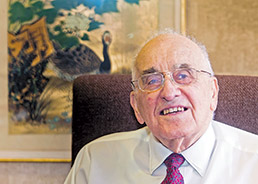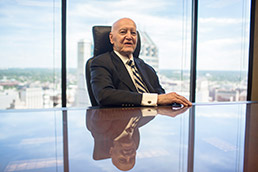
In “The Man of La Mancha,†Don Quixote, the idealistic patriarch of the victims of the Spanish Inquisition, inspires as he extols the benefits of dreaming the impossible. Life does imitate art, and big dreams often rouse great feats that reap benefits enjoyed far beyond the circle of visionaries and dreamers. Risk-takers embark on a quest to realize their dreams, but the ones who do not implement well often see their dreams face the same fate as Don Quixote, who died early at the hands of the authority figures of his time.
In the world of innovation, implementation reveals the efficacy of impossible dreams. Without the perseverance to think critically, experiment and execute to realize a dream, a vision — as they say in Silicon Valley — is mere “vaporware.†Innovation hubs, as President Obama celebrated in a recent speech in North Carolina, are emerging as places where visionaries gather to dream, prove concepts, birth products, and launch manufacturing enterprises.
The California Innovative Hub initiative was crafted in Palm Springs several years ago, and today the Coachella Valley iHub is incubating 20 start-up companies creating high-tech products from branded social messaging to storage solutions for renewable energy.
It is one of 16 innovation hubs in California and first to add an Accelerator Campus to its iHub network.
The CViHub first nurtures and assesses the entrepreneurs’ dreams to the threshold of reality, and then mitigates the risks of entrepreneurship through the implementation stage of operating a business at the Accelerator Campus.
The question of the next decade may be this: Can innovation hubs lead the United States out of the Great Recession and toward a sustainable future where the American dream can again become reality for most of our citizens? Early results of the CViHub indicate the answer is yes.
The kind of creativity that drives innovation and entrepreneurship may be widely praised and desired, but, in reality, creative solutions often meet with resistance and open hostility. Apple’s Steve Jobs and other highly successful entrepreneurs are known for anti-social behavior, acting as though rules did not apply to them. Whether we like it or not, creativity correlates directly to nonconformity, and the success of innovation hubs will depend on recognizing, attracting and nurturing nonconformity.
A 2010 Kauffman Foundation study by Tim Kane concluded that “all net job growth in America comes from start-up companies.â€
The CViHub surrounds its start-up companies with professional mentors and a workforce development program aligned with needs of the jobs being created. It is also Spartan in its surroundings to keep the entrepreneurs hungry and humble — a way to encourage the start-ups to work hard to graduate to the real world, creating wealth and much-needed jobs for the local economy.
President Obama is on the right track to embrace innovation hubs as a path to a sustainable future. When implemented in an exemplary manner, innovation hubs can be the birthplace of the jobs of the future where the American spirit of entrepreneurship is revived.
It is this spirit that can resurrect a time when each generation can once again expect to be better than the previous generation making the old American dream the new reality.
Innovation hubs — whether deliberate creations of the public, public-private partnerships, for-profit entities or even random gatherings of creative people with ambition — have the greatest potential to return the U.S. economy to one that continuously expands the middle class on the sustainable basis of desirable products built by people with valuable skills. To do that, innovation hubs must be more than places where people think outside of the proverbial box. To really elevate this country’s relevance on the world stage, innovation hubs will have to be places where people are inspired to live outside the box, to dream, invent and to build the impossible dream.




 Alexis “Alex†Cholis, 96, retired this year after practicing more than 70 years in South Bend. (IL file photo)
Alexis “Alex†Cholis, 96, retired this year after practicing more than 70 years in South Bend. (IL file photo) Phil Kappes (IL file photo)
Phil Kappes (IL file photo) Poff
Poff



